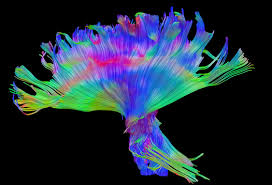Brain Plasticity and Brain Injury

It seems that every passing day there’s a new story about concussion in sport, and the measures being taken to protect the health of professional and varsity athletes. Brain injury, however, is not limited to the playing field. Every year there are roughly 1,050,000 brain injuries sustained in North America (1 million in the USA and 50,000 in Canada). Brain injury is also the leading cause of death and disability globally.
Brain injury is roughly divided into two types: traumatic and acquired. The difference being that traumatic brain injury is the result of a direct impact to the brain whereas acquired brain injury is not necessarily the result of external force, but rather from things like stroke, degenerative diseases or tumors.
Traumatic Brain Injury
The majority of traumatic brain injuries are caused by traffic accidents. As a result of their injuries, slightly more than half of the victims of severe traumatic brain injuries end up having another accident in which they are at fault. Focussing on safe driving practices is part of getting back behind the wheel after sustaining a brain injury, and scientifically-based programs, like the BrainHQ Driving Cognitive Training, help with this process. Our recent blog series on driving goes into more detail on the proven brain training methods to improve your driving safety.
Someone who has suffered a traumatic brain injury, such as concussion, is three times more likely to suffer from a second traumatic brain injury along with the potential complications associated with that kind of injury. With the brain being the control centre for all of the body's systems, an injury to the brain means these systems won't necessarily work the right way. Vision, balance, and reflexes are all affected, which can result in a secondary injury to another part of the body. An example of this could be a football player hurting a knee after suffering a mild traumatic brain injury and remaining on the field. Recent studies have also found a connection between traumatic brain injury and neurodegeneration. These types of injuries are also associated with chronic pain, so the long-term effects from the injury can persist well after brain health has stabilized.
Multidisciplinary rehabilitation has been found to be a successful treatment of traumatic brain injury, in that both physical training and brain training exercises improve outcomes for patients. And while the healing process can be a long and arduous one, studies appear to suggest clinical recommendations that take advantage of neuroplasticity as part of the treatment for traumatic brain injuries.
Acquired Brain Injury
In North America, strokes are the third leading cause of death, and affect women more than men. Because they affect the brain, strokes cause problems with both thinking clearly and memory. Brain training, such as To-do List Training and Face to Face are exercises similar to those used as part of a rehabilitation process. While brain training exercises have long been part of stroke recovery, it has only recently been observed that the exercises can also enhance the effect of other related therapies and that brain training exercises can also play a role in delaying the onset of neurodegenerative disorders.
While the numbers and statistics behind brain injuries can be quite scary, there are some simple steps we can take to help reduce our chances of being in an accident and avoiding the causes associated with strokes. Lifestyle changes, such as a heart healthy diet and quitting smoking, along with exercise to improving brain health, such as Divided Attention and Target Tracker from BrainHQ; all contribute to preventing brain injury in the first place, as well as contributing to successful rehabilitation.
Brain Injury and Concussion in Sport
Summary: Brain Plasticity and Brain Injury
DynamicBrain Inc. is the Canadian Partner of Posit Science Corporation providing brain fitness program, BrainHQ in English and French.






 English
English
 Français
Français


